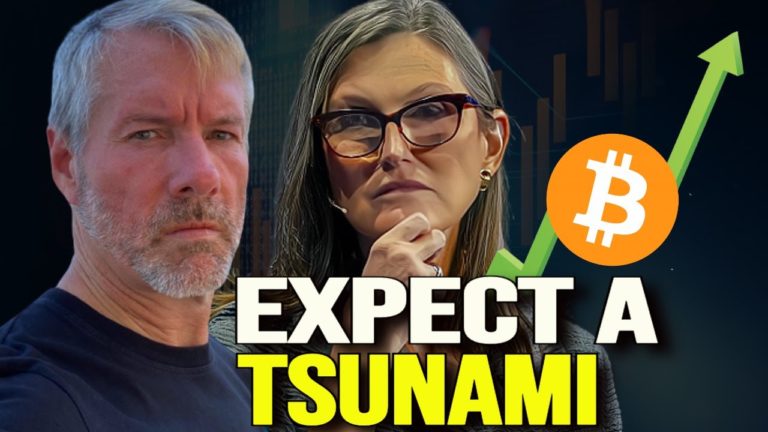Crypto words and phrases are often tinged with radical exuberance, revolution, and change. Decentralized Finance Explained, will break down the language so that you too can better understand DeFi. Decentralized Finance stands to reinvent the entire existing infrastructure of modern capitalism through its possibilities. It is a kind of DeFi-ance, so to speak, in the face of an antiquated system, where power is collected and centralized, typically among the wealthy. And we, the participants in the current global banking system, pay the toll to these powers.
Decentralized Finance Explained
Decentralized Finance: It is a means for peer-to-peer lending, borrowing, exchanging, collecting interest, and many other numerous types of financial activity on the blockchain through the use of smart contracts and decentralized applications (dApps). Centralized power, in the form of financial institutions, are thus redistributed to people through blockchain, where everyone participating in the network can now conduct their affairs without the gatekeepers of wealth profiting at their expense.
Decentralized Finance is, therefore, a blanket term used in crypto with use cases as broad as all the types of financing that we are accustomed to. It’s decentralized, revolutionary finance, and its applications will far exceed what traditional finance can do. In fact, because DeFi applications and the smart contracts they run on are programmable, they allow for the automation of finance, which will lead to great time-savers for ourselves and massive productivity gains for businesses.
For example, the automatic bill pay that we set up to pay our auto loans—with DeFi technology, one day we’ll be able to not only automate the payment, but also link the payment to a crypto wallet which in turn can be programmed. We may set up the wallet to pay extra principle when our savings balance exceeds a certain level. We could also set up the wallet to perform smart distributions, such as automatically allocating our earnings as we see fit.
For example, we may have the smart wallet distribute our paychecks into crypto assets earning yields. Combine this with Artificial Intelligence and smart wallets on blockchains could manage our investments for us. Allocate our earnings based on our risk tolerances. All of this taking place without the need for a third-party middle institution, with their fees and barriers to entry.
The possibilities of programmable money through DeFi will unleash unbounded creativity and lead to a vast redistribution of wealth. DeFi will unlock massive productivity gains and allow for a democratic system of finance—a new kind of finance that is balanced, fair, and accessible to all.
Here we’ll go over some of the prominent forms of decentralized finance active today. We’ll give examples of such services to earn rewards on your crypto. But bear in mind, crypto is a new frontier—and being a pioneer in crypto space has risks. So be sure to thoroughly research any new venture.
Decentralized exchanges
To understand what a decentralized exchange is, it’s best to start with defining a centralized exchange. Centralized exchanges rely on third parties such as banks and brokerage firms to settle transactions. In Crypto, Coinbase is the most popular centralized exchange. They custody your cryptocurrency for you. Crypto transactions on a centralized exchange like Coinbase are not peer-to-peer. Instead, Coinbase settles the transaction acting as the third party.
Contrast this with decentralized exchanges, which allow you to directly exchange your cryptocurrency without having to interact with a third-party service. When you exchange crypto through a decentralized exchange, the crypto remains in your wallet until it is swapped. There is no third-party entity settling the transfer. Instead, your transaction is settled through a smart contract, which provides the protocol necessary for you to trade your crypto peer-to-peer.
Thus, decentralized exchanges are playing a major role in today’s DeFi.
They work by allowing users to directly connect a wallet to an exchange service where users can then have access to liquidity pools. This liquidity is provided by other users within exchange contributing their crypto for interest. Services like Uniswap or SushiSwap use smart contracts to provide the logic governing how the crypto transfers will take place. The smart contract automates the terms agreed upon by the participants so that no financial institution is needed to conduct the transfer—this saves money on fees, or even having to establish a banking account, which pays very little in interest these days.
Staking
To earn interest in crypto, staking has become the go to method to both HODL your crypto currency while earning a reward. Coins such as Polkadot and Cardano run on proof-of-stake (PoS) blockchains. And ethereum is in the process of changing over from proof-of-work (PoW) to proof of stake. Essentially, these PoS and PoW refer to the consensus protocols built into the blockchain network to incentivize miners or stakers to run the network. They are the basis by which cryptocurrencies operate.
To stake crypto, the owner locks up a proof-of-stake coin to earn a reward in the form of a yield. The best reward is given to node operators, who run software protocols behind the blockchains. You may have heard the term total value locked (TVL). This refers to the total amount of crypto that has been staked or locked up for any given proof-of-stake cryptocurrency for a set period. Cardano, for example, now has thirty billion TVL at the time this is being written. The yield, or staking reward, is structured into the staking protocol. Maybe the yield is 5% for a given token, for example.
To avoid operating a node, you can instead choose to have your crypto held in a staking pool. Through a smart contract you can contribute a cryptocurrency to a staking pool, the organizer running the staking pool will be the node operator, not yourself. To participate in such a pool, you would likely earn less interest than the node operator. And there may even be fees associated with the agreement. But you will be able to earn interest though the agreement just by providing liquidity to the staking pool.
Yield Farming
Staking crypto itself can be thought of as a form of yield farming. By definition yield farming refers to putting your crypto assets to work for you and generating a reward on those assets. But there are more elaborate forms of earning yields on your crypto than the staking method described above. Through liquidity pools, which are decentralized methods of contributing your crypto to pool, crypto holders can contribute their crypto and earn a reward by doing so.
Aave (AAVE) is an example of such a decentralized finance application whereby you can earn interest through a liquidity pool. On Aave.com, you can link a crypto wallet to the site, then deposit an Aave supported coin or token. In return, you receive what is called an “a” token (representative of your deposit, which earns you interest).
For example, if you deposit 1 USDT, you will receive 1 “aUSDT” on a 1:1 basis. The “a” token will receive the interest based on the supply and demand for that token within the liquidity pool on Aave. When you no longer wish to use the service, you simply exchange your “aUSDT” token for the USDT token, again on 1:1 basis, yet you get to keep the interest that on the aUSDT.
Here you can learn more about depositing and earning interest on Aave.
Borrowing
You can also take out a loan based on your supported asset at a set interest rate. In this regard, you would be borrowing from the asset pool of the deposited cryptocurrencies (the same aforementioned people who are providing liquidity to earn interest).
When you borrow crypto from a liquidity pool, you also post collateral to secure the loan. The collateral that is posted can potentially be liquidated if the assets(s) posted as collateral drops below a certain level.
In both of the above examples of yield farming and borrowing, your cryptocurrency is not deposited into an account; instead, it is allocated into a smart contract. The smart contract pulls current data from reliable sources such as an oracle, and the smart contracts implement the contractual conditions (such as how the interest rates are determined). The smart contracts are imbedded into the blockchain that is not owned by any institution or entity; rather, it is a decentralized network without any central point of command.
Privacy in Finance
Without a third-party settling the transaction, there is no corporation collecting our data and selling it to others. The internet has morphed into an elaborate data collector, which not only collects information about our buying habits, but it also goes as deep as examining our keystrokes, psychologically profiling us, all with the intent of packaging up the digital version of ourselves and profiting from this information. This digital replica, so to speak, is not owned by us—we give up our rights to our digital homunculus through all the terms and conditions that services like Google, Facebook, Instagram, etc. make us digitally agree to.
The shifting of our digital rights has taken place gradually, silently, until we are now at the point where it just seems an inevitable consequence to our taking advantage of what the internet has to offer.
Decentralized Finance will allow us to take back control of our financial digital lives. There is no agreement to sign—it operates on a distributed network—not by a corporation seeking to satisfy shareholders with profits; rather, the unlocked productivity of reduced fees and costs by not having an institution as the middleman, goes straight the users of the service—to us.
We have yet to experience the innovation that will be opened for us through programmable money and smart contracts. And since we are in the early stages, it’s important to understand the technology beyond the projects we are investing.
Don’t risk more that you can afford to lose in a new project—as exchange hacks, rug pulls, and scams now litter the crypto space. Even tech savvy entrepreneurs, like Mark Cuban from Shark Tank, has lost a portion of his crypto investment through a rug pull. In crypto, rug pulls can take on many forms. It may be an initial coin offering where the founders abandon the project once they have reaped millions of dollars through the offering. It could also be a liquidity pool that attracts investors through a high yield on crypto, but then the tokens staked by investors to participate in the pool drops dramatically when the original liquidity providers pull out their assets, thereby plummeting the value of the token.
As we progress and blockchain technology advances, dApps will likely be as simple as paying with a credit or sending an email. But we are not there yet—so, tread carefully. Big rewards come with big risks. If you do decide to dive into DeFi, ensure that you have done your research, and that the projects are sound. Get feedback from the project’s community, check sites like GitHub to see if the project is under active development. When it comes to yield farming, if the interest being offered sounds too good to be true, it is probably too good to be true.
Expect to take some bumps along the road, but nonetheless, enjoy the exciting journey… as an investor in Decentralized Finance, you’re a pioneer on the crypto frontier.
Best practices when investing in Defi: Do not invest more than you can afford to lose; start small while you are becoming familiar.






